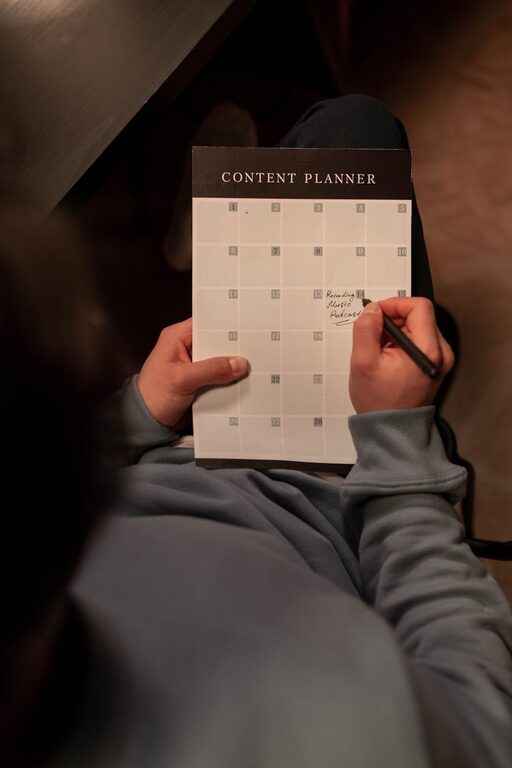Creating a weekly reset routine can be a game-changer for your mental clarity, productivity, and overall well-being. Just like you reboot your computer to improve its performance, you can design a routine that helps you pause, reflect, and refresh before diving into a new week. In this blog post, we’ll explore practical steps to craft a weekly reset routine tailored to your needs.
Why You Need a Weekly Reset Routine
Life often feels overwhelming with the constant flow of responsibilities and distractions. Without a regular reset, small stressors accumulate, and important tasks may slip through the cracks. A dedicated reset routine offers you:
– Mental clarity by letting you pause and reflect.
– Improved organization by reviewing tasks and priorities.
– Reduced stress by creating a sense of control and calm.
– Renewed motivation to tackle the coming week.
When you prioritize a moment to reset, you build a foundation for steady progress and balance.
Step 1: Choose the Right Time and Place
Consistency is key when establishing any routine. Decide on a specific day and time each week for your reset. Many people prefer Sundays or the last day of their workweek, but you can choose what fits your schedule best.
Choose a comfortable and quiet spot where you can focus without distractions. This could be a cozy corner of your home, a local café, or even outdoors.
Step 2: Prepare Your Tools and Environment
Having the right tools makes your reset smoother and more effective. Consider gathering:
– A journal or planner to jot down thoughts, goals, and plans.
– Digital tools like calendar apps or to-do lists.
– A calming beverage such as tea or water.
– Optional: relaxing music or candles to create a soothing atmosphere.
Before you start, tidy up your space to create a clean and inviting environment. A clutter-free area can help clear your mind as well.
Step 3: Reflect on the Past Week
Begin your reset by looking back on the past week. Reflection helps you understand what went well and where improvements may be needed.
Ask yourself questions like:
– What accomplishments am I proud of this week?
– What challenges did I face and how did I handle them?
– Were there any tasks or goals I neglected?
– How did I feel emotionally and physically?
Take notes on your answers to gain insights that will guide your planning.
Step 4: Review and Organize Your Commitments
Next, review your calendar, to-do lists, and any ongoing projects. Identify:
– Tasks that need to be carried over or rescheduled.
– Upcoming deadlines or appointments.
– Areas where you need additional time or resources.
This step helps you avoid surprises and reduces anxiety about overlooked responsibilities.
Step 5: Set Priorities and Goals for the Coming Week
Now that you’ve reflected and organized, decide what matters most for the next week. Choose a handful of realistic goals to focus on rather than overwhelming yourself with too many tasks.
Consider:
– Work-related objectives.
– Personal self-care practices.
– Social or family commitments.
– Learning or hobby pursuits.
Write your goals clearly and break larger tasks into manageable steps.
Step 6: Plan Your Week with Intent
Use your planner or digital calendar to map out your goals and commitments. Blocking time for specific tasks makes it more likely you’ll follow through.
Include:
– Work hours and important meetings.
– Time for exercise or relaxation.
– Periods for meal prep and chores.
– Free time to recharge and enjoy hobbies.
Don’t forget to remain flexible—life can be unpredictable, so it’s important to adjust as needed.
Step 7: Practice a Relaxation Ritual
End your weekly reset with a moment dedicated to relaxation. This could be:
– A short meditation or deep breathing exercise.
– Reading a book or listening to calming music.
– Taking a warm bath or gentle stretch.
– Writing gratitude notes or positive affirmations.
This ritual signals your brain that the reset is complete and helps you feel centered.
Tips for Maintaining Your Weekly Reset Routine
– Keep it simple: Your routine should be manageable—20 to 60 minutes is enough.
– Be consistent: Try to do your reset at the same time each week.
– Adapt as needed: If a part of your routine isn’t helpful, change it.
– Celebrate progress: Acknowledge your efforts to reinforce the habit.
– Limit distractions: Turn off notifications or find a quiet space.
– Involve others: Share the idea with family or friends for motivation.
Conclusion
Designing a weekly reset routine is a powerful way to bring more balance and focus into your life. By consistently setting aside time to reflect, organize, and plan, you create a habit that supports your goals and well-being. Start small, be kind to yourself, and watch how this simple practice transforms your weeks.
Try crafting your own weekly reset routine today—and enjoy the peace and productivity it brings!



